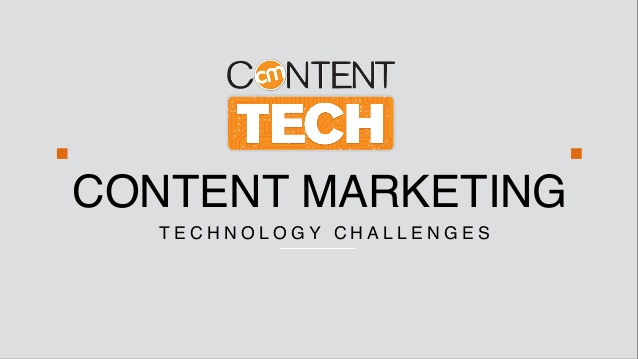The content marketing team spent the better part of six months re-platforming the magazine into the enterprise CMS. The content marketing team spent a year re-platforming the magazine yet again. As it turned out, personalization took the budget too high, so even after hundreds of hours of planning and architecting, the personalization part of the solution would be phase two for the magazine. There wasn’t enough time or budget to create templates to match the magazine’s original design or features. The team now spent 50% of their time working in the technology, managing digital assets, addressing the new configurations, looking at personalization features, and trying to integrate enterprise analytics. The content marketing team was restructured, and the content marketing director left the company. The net result is either a blindside by corporate IT strategies (as in the above story) or digital content marketing strategies that look at the landscape of marketing technologies, asking “how can we learn how to do that?” The sad truth is teams never “learn to do that” because just as they start, some new technology implementation awaits around the corner. Rather, companies should look to decouple customer/audience data management, and experience presentation and management, and optimization of those experiences. Technology is not change – it is what facilitates change Ultimately, marketers cannot measure themselves by how fast they can deploy new technology. To get out of technical debt, content marketing organizations absolutely need to be built to change – constantly.

The pizza was delicious. It was May 2014, and the content marketing team was celebrating the one-year anniversary of its digital magazine for one of the most prestigious financial services brands in the world.
By all accounts, every goal had been met. It launched on time and only slightly over budget. The audience was growing steadily, and the sales group loved the insight and new opportunities that the magazine produced. Content marketing was a hit at the firm.
The lead account director for the content agency sidled up to the content marketing director and congratulated him. “You know,” she said, “we’re ready to start phase two. We’ve got a promotion and audience development plan, and the audience analytics dashboard ready.” The content marketing director smiled. “I know, I know. I think we’re ready. Let’s sit down on Monday and road-map that.”
Monday never came.
Tech credit card hits its limit
The following week, the team learned the new vice president of digital worked with the CIO to institute a new “One Site 2015” initiative. The company was to centralize all blogs and microsites into the main corporate website and integrate it into the main enterprise CMS.
The content marketing director desperately pleaded his case. Re-platforming the magazine’s WordPress site and Google Analytics into the enterprise CMS would take months and hundreds of thousands of dollars. And, it wasn’t even clear that there would be any benefit.
He lost.
The content marketing team spent the better part of six months re-platforming the magazine into the enterprise CMS. Some magazine features that didn’t meet corporate security and IT conformance were lost. The magazine’s look and feel changed because the enterprise CMS “can’t do that.” The audience promotion and development plan, along with the analytics plan, were sidelined.
Then, a new CMO joined the firm, and budgets were put on hold. Her first order of business was to change the corporate brand architecture, and subsequently the website design. All sections of the website (including thought leadership) were part of that redesign. And, they would innovate by upgrading to the newest version of the enterprise CMS, which included marketing automation and personalization capabilities. Once again, the audience promotion and measurement strategy had to wait.
The content marketing team spent a year re-platforming the magazine yet again. As it turned out, personalization took the budget too high, so even after hundreds of hours of planning and architecting, the personalization part of the solution would be phase two for the magazine.
In June 2017, the team quietly celebrated. It successfully relaunched the magazine as one of the website’s phased releases. Gone was the original magazine design and in its place the new magazine section looked much like the corporate website. There wasn’t enough time or budget to create templates to match the magazine’s original design or features.
As it turned out, the upgraded CMS was more complex to use. The content marketing team now spent hours instead of minutes preparing posts. New workflow rules required posts go through extra regression testing through IT, taking publishing from days to weeks. The cadence slowed to a crawl. Subscriber growth stalled. The team now spent 50% of their time working in the technology, managing digital assets, addressing the new configurations, looking at personalization features, and trying to integrate enterprise analytics.
In November 2017, the content marketing director was called into the CMO’s office. “Why,” the CMO wanted to know, “are there no real results from the thought leadership content?”
The content marketing director started to explain the last two and a half years, but the CMO interrupted: “I’d like you and your team to provide me a business case for why this ‘content marketing’ idea will provide value.”
In February 2018, three months shy of its 5th birthday, the financial services company’s digital magazine was killed. The content marketing team was restructured, and the content marketing director left the company. Content marketing, as a tactic, remains at the company. It is simply a handful of writers creating “investor outlook” PDFs emailed to clients and tracked through the enterprise CMS.
Technology debt: Higher than ever
This story is extreme (and true) but all too common. With the constant pressure of innovation and results, C-suite leaders underestimate the…

COMMENTS